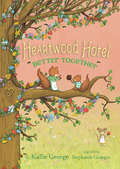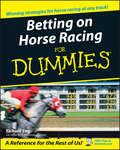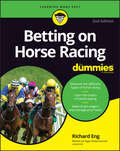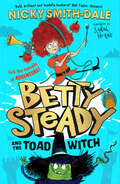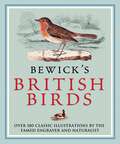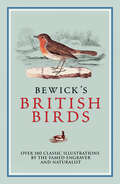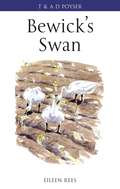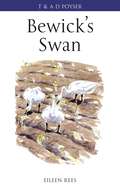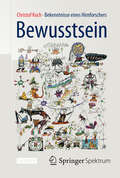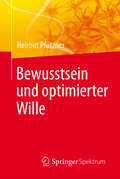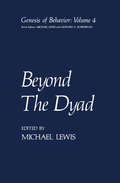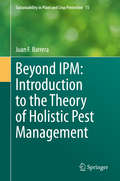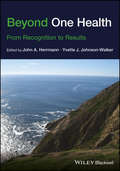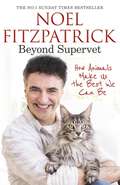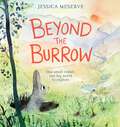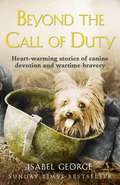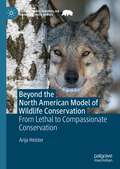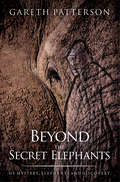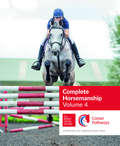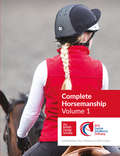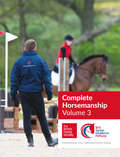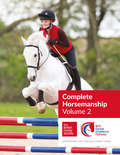- Table View
- List View
Better Together (Heartwood Hotel #3)
by Kallie GeorgeSpring has sprung and the animal staff of the Heartwood Hotel gear up for another busy season in the next installment of this adorable illustrated chapter book series.Spring has come to Fernwood Forest, and the Heartwood Hotel is all a-bustle. With Mr. Heartwood off on vacation, it&’s up to Mona and the rest of the staff to keep everything running smoothly. When rumors buzz of a rival hotel, Gilles is determined to prove that the Heartwood is the very best with the splashiest Spring Splash the forest has ever seen. Guests check in from near and far to compete for the Cutest Egg, the Tiniest Talent, and the Best Blossom. Newcomer Henry is all too happy to help out, making Mona start to feel unsure of her place. Does the Heartwood really need her as much as she thought? But soon there&’s more to worry about than whose egg has the sweetest speckles. Some decidedly uninvited guests have been drawn to the festivities. Can Mona find a way to bring everyone together in time to save them all from danger?Readers will cheer for these kind, brave, beloved characters as they embark on their next adventure in the third book of the charmingly illustrated Heartwood Hotel series.
Betting on Horse Racing For Dummies
by Richard EngHow to enjoy a day at the races-and bet to win! The last two years have seen a record number of Americans tune in for climatic Triple Crown races featuring Smarty Jones and Funny Cide; in 2004, television viewership jumped a whopping 61 percent over the record set in 2003, and the Belmont Stakes race itself drew a record crowd of more than 120,000! This easy-to-understand guide shows first-time visitors to the track how to enjoy the sport of horse racing-and make smart bets. It explains what goes on at the track, what to look for in horses and jockeys, how to read a racing form and do simple handicapping, and how to manage betting funds and make wagers that stand a good chance of paying off. Complete with coverage of off-track and online betting, it's just what anyone needs to play the ponies-and win! Richard Eng (Las Vegas, NV) is a racing writer and handicapper for the Las Vegas Review-Journal, a columnist for the Daily Racing Form, and the host of a horseracing radio program in Las Vegas. He was formerly a part of the ABC Sports team that covered the Triple Crown.
Betting on Horse Racing For Dummies
by Richard EngBetting on Horse Racing For Dummies is packed with information that teaches you the ins and outs of the racetrack. You&’ll learn how to improve your odds, avoid common betting mistakes, and just plain have fun at the races. This is a spectator&’s easy-to-understand guide, so you&’ll have no trouble identifying the racing breeds with their strengths and weaknesses, sizing up the jockey, understanding the importance and role of a trainer, placing bets, managing money, and beyond. Can&’t make it to the track? No worries! You&’ll get the scoop on online betting with off track betting sites and apps. This update covers the latest changes in the betting world and in the racing world, so you&’ll know just what you&’re wagering. Learn about the different types of horse racing Discover and identify the best racing breeds Know your jockeys and trainers Make smart wagers and manage your fundsFor beginning betters, Betting on Horse Racing For Dummies is your ticket to well informed wagers and a winning edge. Already know the ropes? You&’ll love the market trends and insider tips you&’ll find inside.
Betting on Horse Racing For Dummies
by Richard EngBetting on Horse Racing For Dummies is packed with information that teaches you the ins and outs of the racetrack. You&’ll learn how to improve your odds, avoid common betting mistakes, and just plain have fun at the races. This is a spectator&’s easy-to-understand guide, so you&’ll have no trouble identifying the racing breeds with their strengths and weaknesses, sizing up the jockey, understanding the importance and role of a trainer, placing bets, managing money, and beyond. Can&’t make it to the track? No worries! You&’ll get the scoop on online betting with off track betting sites and apps. This update covers the latest changes in the betting world and in the racing world, so you&’ll know just what you&’re wagering. Learn about the different types of horse racing Discover and identify the best racing breeds Know your jockeys and trainers Make smart wagers and manage your fundsFor beginning betters, Betting on Horse Racing For Dummies is your ticket to well informed wagers and a winning edge. Already know the ropes? You&’ll love the market trends and insider tips you&’ll find inside.
Betty Steady and the Toad Witch (Betty Steady and the Toad Witch #1)
by null Nicky Smith-DalePrepare to lick the toenails of adventure! Betty Steady’s faster than an angry goose and stronger than an ogre in yoga pants and she DON’T NEED NO STINKING HELP! But can she prevent disaster before the Toad Witch attacks Wobbly Rock? The funniest young fiction debut of 2024, for readers of You’re A Bad Man, Mr Gum and Grimwood! At twelve years old Betty Steady stands tall and dazzling, and is the Guardian of Wobbly Rock – a faraway kingdom which she protects fearlessly ALL ON HER OWN. But then the Toad Witch literally cuts Betty down to size. Can Betty prevent disaster before the Toad Witch and her evil army launch a terrible attack on Wobbly Rock? And when will she learn that she doesn't have to do stuff ALL ON HER OWN any more? Join us for fights and friendships! Lasagne-eating snails and slimy villains! Meet Betty and her crew: Figg the imp, Simon Anderson the stallion in tiger-print cycling shorts, Elle Emen O’Pea the trumpet-playing mouse in a bobble hat, and many, many more! Just jolly join us, OK? HOT CROSS BUNS!
Bewick’s British Birds
by Thomas BewickWith Bewick on my knee, I was then happy...' Jane EyreCharlotte Bronte's heroine was not alone in her enjoyment of Thomas Bewick's British Birds - since its first publication in 1797 it has become one of the best-loved classics of natural history. Bewick's masterful woodcuts are more than scientific records; each beady eye and jaunty pose betrays the artist's love of birds.This edition includes over 180 bird species, from garden favourites such as robins, blackbirds and finches, to predators such as the osprey and the majestic golden eagle. Each entry is illustrated with an engraving, and throughout the book are narrative vignettes typical of Bewick's playful, engaging style.
Bewick's British Birds: Over 180 Classic Illustrations by the Famed Engraver and Naturalist
by Thomas BewickWith Bewick on my knee, I was then happy...' Jane EyreCharlotte Bronte's heroine was not alone in her enjoyment of Thomas Bewick's British Birds - since its first publication in 1797 it has become one of the best-loved classics of natural history. Bewick's masterful woodcuts are more than scientific records; each beady eye and jaunty pose betrays the artist's love of birds.This edition includes over 180 bird species, from garden favourites such as robins, blackbirds and finches, to predators such as the osprey and the majestic golden eagle. Each entry is illustrated with an engraving, and throughout the book are narrative vignettes typical of Bewick's playful, engaging style.
Bewick's Swan (Poyser Monographs)
by Eileen ReesA fascinating and highly readable monograph, showcasing one of the flagship species of wetland conservation in Britain to superb effect. The arrival of thousands of Bewick's Swans from their Arcticbreeding grounds to lakes and wetlands throughout northern and easternBritain is an unforgettable sight. Popular among both birders and thewider public, these elegant birds are among the best-studied waterfowlin the world. Beginning with the work of the late Sir Peter Scott inthe 1950s, Britain's Bewick's have been the subject of intensivebehavioural study, while their population ecology has provided asimilar focus for research. In Bewick's Swan, Eileen Rees tellsthe story of these birds in rich detail. Rees discusses their biologyin full, with sections on population and distribution, breedingbiology, wintering behaviour, food and feeding ecology, taxonomy andphylogeny, migration, and conservation; much original research isincluded, and there is frequent reference to the Bewick's siblingsubspecies, the Tundra Swan of North America. Personal recollectionsfrom a lifetime of study weave through the narrative, which isilluminated by Dafila Scott's evocative illustrations."The leading monograph of the year, by a long way." British Birds, Feb 2007
Bewick's Swan (Poyser Monographs #41)
by Eileen ReesA fascinating and highly readable monograph, showcasing one of the flagship species of wetland conservation in Britain to superb effect. The arrival of thousands of Bewick's Swans from their Arcticbreeding grounds to lakes and wetlands throughout northern and easternBritain is an unforgettable sight. Popular among both birders and thewider public, these elegant birds are among the best-studied waterfowlin the world. Beginning with the work of the late Sir Peter Scott inthe 1950s, Britain's Bewick's have been the subject of intensivebehavioural study, while their population ecology has provided asimilar focus for research. In Bewick's Swan, Eileen Rees tellsthe story of these birds in rich detail. Rees discusses their biologyin full, with sections on population and distribution, breedingbiology, wintering behaviour, food and feeding ecology, taxonomy andphylogeny, migration, and conservation; much original research isincluded, and there is frequent reference to the Bewick's siblingsubspecies, the Tundra Swan of North America. Personal recollectionsfrom a lifetime of study weave through the narrative, which isilluminated by Dafila Scott's evocative illustrations."The leading monograph of the year, by a long way." British Birds, Feb 2007
Bewusstsein: Warum es weit verbreitet ist, aber nicht digitalisiert werden kann
by Christof KochBewusstsein – das weiter verbreitet ist als bisher angenommen – ist das Gefühl, lebendig zu sein, es ist kein Rechenvorgang und auch kein cleverer Trick. In diesem Buch liefert Christof Koch eine schnörkellose Definition des Bewusstseins als bewusstes Erleben, vom alltäglichsten bis zum außergewöhnlichsten – eben das Gefühl zu leben.Die Psychologie erforscht, welche kognitiven Vorgänge einer bewussten Wahrnehmung jeweils zugrunde liegen. Die Neurowissenschaft spürt den neuronalen Korrelaten des Bewusstseins im Gehirn nach, dem Organ des Geistes. Aber warum das Gehirn und nicht etwa die Leber oder ein anderes Organ? Wie kann das Gehirn, drei Pfund höchst erregbares Gewebe, ein Gegenstand im Universum, der denselben physikalischen Gesetzen gehorcht wie jeder andere Gegenstand, subjektives Erleben hervorbringen? Will man eine Antwort auf diese Frage finden, braucht man, so Koch, eine quantitative Theorie, die beim Erleben ansetzt und zum Gehirn fortschreitet. Im vorliegenden Buch umreißt der Autor eine solche Theorie, basierend auf der integrierten Informationstheorie. Koch beschreibt, wie die Theorie viele Fakten zur Neurologie des Bewusstseins erklärt und wie man mit ihrer Hilfe sogar ein in der Klinik einsetzbares Bewusstseins-Messgerät konstruiert hat. Die Theorie sagt voraus, dass viele, ja vielleicht alle Tiere das Leben in vielen Facetten erleben; Bewusstsein ist viel weiter verbreitet als allgemein angenommen. Entgegen der landläufigen Ansicht aber argumentiert Koch, dass programmierbare Computer kein Bewusstsein haben werden. Selbst ein perfektes Softwaremodell des Gehirns ist nicht bewusst – es simuliert lediglich Bewusstsein. Bewusstsein ist keine bestimmte Art von Rechenvorgang, es ist kein cleverer Trick. Bewusstsein ist Sein.reich mit dem Sachbuchprogramm waren.
Bewusstsein: Bekenntnisse eines Hirnforschers
by Christof KochWie kann Aktivität im Gehirn Gefühle auslösen? Wie kann „bloßes Fleisch“ – so wird der Körper in Cyberpunkromanen oft abfällig genannt -- subjektives Empfinden hervorbringen? Oder allgemeiner gesagt: Wie kann etwas Physisches etwas Nichtphysisches, subjektive Zustände erzeugen? Ob es der Zahnschmerz ist, die Freude beim Anblick der eigenen Kinder oder der Geschmack eines edlen Weins, sie alle haben denselben Ursprung in der Aktivität von Nervengewebe, im Bewusstsein. Christof Koch forscht seit Jahren über das Thema Bewusstsein. In einer Art Bestandsaufnahme zeigt er den derzeitigen Stand der Forschung auf, an dem auch maßgeblich Wissenschaftler wie Francis Crick, Ned Block, David Chalmers, Stanislas Dehaene, Giulio Tononi und Wolf Singer mitgewirkt haben. Ihm erscheint nicht als Widerspruch, mit naturwissenschaftlichen, empirischen Methoden erklären zu wollen, wie Gefühle entstehen. Wir sind uns der meisten Dinge, die in unserem Kopf vorgehen, nicht bewusst. Koch postuliert, dass Zombies ohne Bewusstsein in weiten Teilen unser Leben steuern, auch wenn wir der festen Überzeugung sind, darüber selbst zu bestimmen. Seiner Meinung nach wird es gelingen, empfindungsfähige Maschinen zu bauen – er liefert eine erste Vorlage hierfür im Buch. Er reflektiert so diverse Aspekte wie die Unterscheidung zwischen Aufmerksamkeit und Bewusstsein, das Unbewusste, die Physik und Biologie des freien Willen, Hunde, den Ring der Nibelungen, den Glauben an einen persönlichen Gott und Traurigkeit. Kochs Buch ist mehr als ein wissenschaftlicher Überblick – es ist zudem Bekenntnis, Autobiographie und futuristische Spekulation.
Bewusstsein und optimierter Wille
by Helmut PfütznerDas Fehlen freien Willens – so die Sorge der Dualisten - entwürdigt den Menschen. Der Text belegt das Gegenteil: das Fehlen macht den Menschen robust und verlässlich. Dazu entwirft das Buch ein auf schrittweise optimierenden Vorgängen basierendes biophysikalisches Iterations-Modell, das die elementaren Funktionen des Gehirns in konsequenter Weise interpretiert. Aus nüchterner Sicht der Biophysik ist es hohe Konzentration von spezifischen Neuronen, die das höchst physische Phänomen des Bewusstseins entstehen lässt. Voraussetzung dafür ist, dass "Vehemenz" des Denkens aufkommt. Bewusstsein ist kein Produkt der Evolution, sondern ein den Naturgesetzen a priori zugegebener Faktor. Der ist zwar beschreibbar, doch nicht erklärbar – ebenso wenig wie Magnetismus oder Gravitation.An die Stelle von „freiem“ Willen rückt „optimierter“ Wille: Das von Ererbtem und Erworbenem geprägte Ich bestimmt das Handeln und Denken in optimierter Weise, gemeinsam mit Einflüssen der Umwelt.p>
Beyond The Dyad (Genesis of Behavior #4)
by Michael LewisHow are we to understand the complex forces that shape human be havior? A variety of diverse perspectives, drawing on studies of human behavioral ontogeny, as well as humanity's evolutionary heritage, seem to provide the best likelihood of success. It is in an attempt to synthesize such potentially disparate approaches to human development into an integrated whole that we undertake this series on the genesis of behav ior. In many respects, the incredible burgeoning of research in child development over the last decade or two seems like a thousand lines of inquiry spreading outward in an incoherent starburst of effort. The need exists to provide, on an ongoing basis, an arena of discourse within which the threads of continuity between those diverse lines of research on human development can be woven into a fabric of meaning and understanding. Scientists, scholars, and those who attempt to translate their efforts into the practical realities of the care and guidance of infants and children are the audience that we seek to reach. Each requires the opportunity to see-to the degree that our knowledge in given areas permits-various aspects of development in a coherent, integrated fash ion. It is hoped that this series-which will bring together research on infant biology, developing infant capacities, animal models, the impact of social, cultural, and familial forces on development, and the distorted products of such forces under certain circumstances-will serve these important social and scientific needs.
Beyond IPM: Introduction to the Theory of Holistic Pest Management (Sustainability in Plant and Crop Protection #15)
by Juan F. BarreraAbout 15 years ago, we asked ourselves why the methods developed by the research institutions for the management of pests were almost not used by small landholder farmers. It seemed obvious to us that conventional pest control –called “Integrated Pest Management”– was based on a reductionist approach. In reviewing the literature on the subject, we found that our concern was not new or unique. The agreement of some authors with our ideas reinforced our efforts to find a holistic approach to pest management. We took two central ideas to develop the holistic approach: First, pest management actions must put the farmer at the center of the system. Second, pest management must consider not only both pests but the other important components of the system in question. This approach based on the farmers and the systems in which they are immersed, is called “Holistic Pest Management” or HPM. In this book, I present the philosophy and practice of HPM, a new paradigm of pest management.
Beyond One Health: From Recognition to Results
by John A. Herrmann Yvette J. Johnson?WalkerTackling One Health from a multi-disciplinary perspective, this book offers in-depth insight into how our health and the health of every living creature and our ecosystem are all inextricably connected. Presents critical population health topics, written by an international group of experts Addresses the technical aspects of the subject Offers potential policy solutions to help mitigate current threats and prevent additional threats from occurring
Beyond One Health: From Recognition to Results
by John A. Herrmann Yvette J. Johnson-WalkerTackling One Health from a multi-disciplinary perspective, this book offers in-depth insight into how our health and the health of every living creature and our ecosystem are all inextricably connected. Presents critical population health topics, written by an international group of experts Addresses the technical aspects of the subject Offers potential policy solutions to help mitigate current threats and prevent additional threats from occurring
Beyond Supervet: The New Number 1 Sunday Times Bestseller
by Professor Noel FitzpatrickIn this inspiring, uplifting and heart-warming memoir, world-renowned veterinary surgeon Professor Noel Fitzpatrick shares some of the most personal and powerful tales ever from his life as The Supervet. Picking up from where the Sunday Times bestselling How Animals Saved My Life left off, Noel shares the moving, heart-warming and often surprising stories of the animals that he has treated in his remarkable career. As he explores how our relationships with animals can bring out the best in each of us, we meet some of the wonderful animals he has tried to help, the families who love them and the deeply personal challenges Noel has faced along the way. It is animals like these who have taught Noel the valuable lessons of Love, Hope and Faith - lessons that have sustained him in his life beyond being the Supervet. This is the remarkable story of one man and the animals he has saved, animals who have - in turn - saved him.
Beyond the Burrow
by Jessica MeserveThe big, wide world can be scary, especially when it’s filled with strange-looking creatures who don’t eat carrots. But does giant, clawed and hairy have to mean scary? And is there a rabbit brave enough to find out?From Jessica Meserve comes Beyond the Burrow, a beautiful book to inspire boldness – and encourage us all to step beyond the burrow.
Beyond the Call of Duty: Heart-warming Stories Of Canine Devotion And Bravery
by Isabel GeorgeA second collection of incredible and heart-warming canine stories from around the world, from the bestselling author of The Dog That Saved My Life.
Beyond the North American Model of Wildlife Conservation: From Lethal to Compassionate Conservation (The Palgrave Macmillan Animal Ethics Series)
by Anja HeisterThe North American Wildlife Conservation Model (NAM) is the driver of a strong anthropocentric stance, which has legalized an ongoing, annual exploitation of hundreds of millions of wild animals, who are killed in the United States through trapping, hunting and other lethal practices. Increasingly, the American public opposes the killing of wild animals for recreation, trophies and profit but has little—if any—knowledge of the Model. The purpose of this book is to empower the public with knowledge about the NAM’s insufficiencies and to help expedite the shift from lethal to compassionate conservation, an endeavour urgently needed particularly under the threats of climate change, human population growth and accelerating plant and animal species extinctions.With a focus on trapping, this book exposes the NAM's belief in human supremacy and its consequences for wild animals and their ecosystems, the same value that is driving the ongoing global destruction of nature and accelerating species extinction. Motivated by a deep concern for wild animals who suffer and whose lives are extinguished each year by 'sportsmen and women', this book exposes the violent treatment of wild animals inherent in governmental-promoted hunting and trapping programs, while emphasizing the importance of empathy and compassion for other animals in conservation and in our lives.
Beyond the Secret Elephants: On mystery, elephants and discovery
by Gareth PattersonBeyond the Secret Elephants is Gareth Patterson’s long-awaited sequel to The Secret Elephants, published in 2009.Beyond the Secret Elephants is the continuing story of Gareth Patterson’s almost two decades of research into the secretive Knysna elephants. Significantly, however, it also reveals his startling discovery of a much more mysterious being than the elephants – a relict hominoid known to the indigenous forest people as the Otang.Gareth had long heard about the existence of the otang from the local people but he mentioned it only briefly in The Secret Elephants, focusing instead on his rediscovery of the Knysna elephants and their survival against the odds. He was reluctant to blur the story of the elephants with his findings about the otang.That is, until now.The possible existence of relict hominoids is today gaining momentum worldwide with ongoing research into Bigfoot in North America, the Yeti in the Himalayas and the Orang Pendek in Sumatra. Eminent conservationists and scientists – among them Dr Jane Goodall, Dr George Schaller and Professor Jeff Meldrum – have publicly stated that they are open-minded about the possible existence of these cryptid beings.In the course of his unannounced research into the otang Gareth heard many accounts – mostly spontaneous and unprompted – of otang sightings by others in the area over a number of years. These accounts, documented in the book, are astonishingly consistent both in the descriptions of the otang and in the shocked reactions of the individuals who saw them.Gareth Patterson’s work supports the increasing realisation that humankind still has much to learn about the natural world and the mysteries it holds. The possibility that we may be sharing our world with other as yet unidentified hominoids is today being viewed as something that should not be discounted. And as humankind, we need to reassess our role and our responsibility towards all forms of life that coexist with us on planet Earth.… following in the erudite footsteps of the late Lyall Watson … by exploring beyond the fringe of 'fringe science' … - Ian Redmond OBE
BHS Complete Horsemanship Volume 4 (BHS Complete Horsemanship #4)
by British Horse SocietyThe Complete Horsemanship Volume 4 from the British Horse Society (BHS) is designed to support you as you progress and develop your knowledge and understanding from Stage 3 level to that of Stage 4 (previously known as the BHSII) and then ultimately to Stage 5 (previously known as the BHSI). Designed with your career in mind, the BHS Career Pathway offers a learning platform to help you reach your goals. The structure consists of worldleading and globally recognised qualifications which will support you on your journey of life-long learning in the equine world.The British Horse Society is the largest provider of equestrian education and qualifications in the UK, and as such, we believe it is our duty to ensure we reach and inspire those individuals who will truly make a difference to the future of our sector.
BHS Complete Horsemanship Volume One (Complete Horsemanship #1)
by British Horse SocietyA great foundation for any aspiring equestrian, providing safe, modern and current foundations to progress from in the equestrian industry. Filled with practical knowledge in horse riding, knowledge and care, the first volume in our foundation series is a must for anyone looking to learn the highest standards of equestrianism from the world leading British Horse Society education team. Recommended reading for the British Horse Society Stage 1 award in horse care and riding for those wishing to start their career in the professional industry.
BHS Complete Horsemanship Volume Three (Complete Horsemanship #3)
by British Horse SocietyAn in-depth approach to developing your professional career pathway as a groom, coach or rider. This title introduces the practical element of cross country jumping, further develops your lungeing technique and considers requirements and knowledge for management and care of the horse and yard. Volume 3 expands on the BHS Complete Horsemanship foundation series to support an equestrian professional.
BHS Complete Horsemanship Volume Two (Complete Horsemanship #2)
by British Horse SocietyVolume 2 in our foundation series aims to develop the skills for aspiring equestrians, building on improving efficiency, depth of knowledge and understanding of equine care and management. Volume 2 introduces lungeing a horse for exercise, with practical riding skills progressing to basic show jumping. This title develops our Complete Horsemanship foundation series to include the initial principles for teaching and coaching in the industry.
